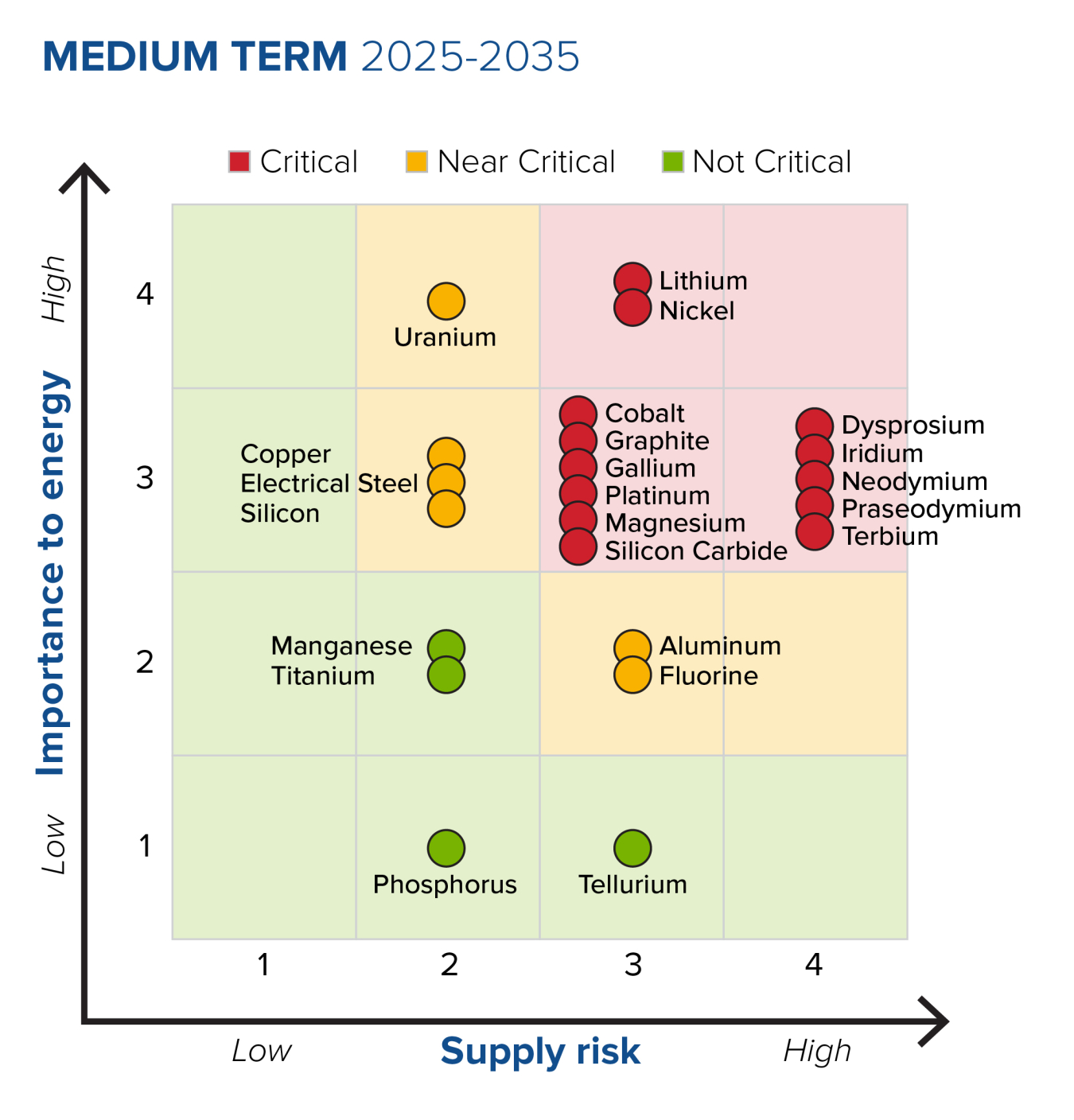The Energy Act of 2020 defines a “critical material” as:
- Any non-fuel mineral, element, substance, or material that the Secretary of Energy determines: (i) has a high risk of supply chain disruption; and (ii) serves an essential function in one or more energy technologies, including technologies that produce, transmit, store, and conserve energy; or
- A critical mineral, as defined by the Secretary of the Interior.
The Energy Act of 2020 defines a “critical mineral” as:
- Any mineral, element, substance, or material designated as critical by the Secretary of the Interior, acting through the director of the U.S. Geological Survey.
2023 Final Critical Materials List
Pursuant to the authority under Section 7002(a) of the Energy Act of 2020, the Secretary of Energy, acting through the Undersecretary for Science and Innovation, determined the Final 2023 Critical Materials List. This list includes critical materials for energy, as determined by the Secretary of Energy, as well as those critical minerals on the 2022 final list published by the Secretary of Interior, acting through the director of the U.S. Geological Survey. The Final 2023 Critical Materials List includes the following:
- Critical materials for energy (“the electric eighteen”): aluminum, cobalt, copper, dysprosium, electrical steel, fluorine, gallium, iridium, lithium, magnesium, natural graphite, neodymium, nickel, platinum, praseodymium, silicon, silicon carbide and terbium.
- Critical minerals: The Secretary of the Interior, acting through the director of the U.S. Geological Survey, published a 2022 final list of critical minerals that includes the following 50 minerals: “Aluminum, antimony, arsenic, barite, beryllium, bismuth, cerium, cesium, chromium, cobalt, dysprosium, erbium, europium, fluorspar, gadolinium, gallium, germanium, graphite, hafnium, holmium, indium, iridium, lanthanum, lithium, lutetium, magnesium, manganese, neodymium, nickel, niobium, palladium, platinum, praseodymium, rhodium, rubidium, ruthenium, samarium, scandium, tantalum, tellurium, terbium, thulium, tin, titanium, tungsten, vanadium, ytterbium, yttrium, zinc, and zirconium.”
This list is based on the assessment described in the U.S. Department of Energy's (DOE's) most recent critical materials assessment, the 2023 DOE Critical Materials Assessment. The results of the assessment are shown in the criticality matrices below. The Final 2023 Critical Materials List includes all materials that were assessed as “critical” or “near critical” in either the short or medium term – with the exception of uranium. Section 7002(a) of the Energy Act of 2020 restricts the listing of critical materials to “any non-fuel mineral, element, substance, or material.” Based on the plain meaning of fuel, uranium used in commercial nuclear reactors is a fuel material. As the 2023 DOE Critical Materials Assessment includes only use of uranium as a fuel, DOE did not designate uranium as a critical material in the Final 2023 Critical Materials List.



